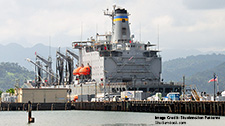China’s Rise in the Indo-Pacific: A Quad Countries’ Perspective

Neeraj Singh Manhas
Abstract:
China’s rise as an economic, technological, and military superpower in the last two decades is one of the most prominent factors that led to the emergence of the Quad grouping consisting of the United States, Japan, Australia, and India as a ‘balance of power’ mechanism in the Indo-Pacific region. The four-nation grouping has evolved over time, particularly in the last two to five years, reaching the summit-level in September 2021 and both broadening and diversifying its areas of cooperation. The fact that China openly denounces the terms “Quad” and “Indo-Pacific” as part of a U.S.-led strategy to contain its rise, by often referring to it as an “Asian NATO”, highlights the critical role of the grouping and how Beijing’s perception of it shapes the internal dynamics within the Quad itself. This issue brief looks into the rise of a belligerent China in the Indo-Pacific and the Quad countries’ strategies to tackle its hegemony.
Related Publications
-
Not Drawing a Parallel. Ukraine and Taiwan: An Indian Perspective
Russia’s war against Ukraine has not only had economic, diplomatic, and geopolitical repercussions, but also exaggerated the fear of accelerated conflicts in the Indo-Pacific, a region with several unresolved conflicts […]
-
Needed, a Framework to Protect Undersea Cables
In the data-driven world we live in, submarine cables are the arteries that connect nation-states and their people in literally every human activity, including trade, commerce, entertainment, and social interactions. […]
-
India-Japan-Philippines: A Strategic Maritime Trilateral or More?
Regional states like India, Japan, and the Philippines have been seeking cooperative solutions with other middle powers that can both counter the Chinese influence and fulfill other economic as well […]
-
ISDP Annual Report 2023
ISDP’s Annual Report for the year 2023. We look back on 2023, a year in which tensions and conflicts captured the strategic space in ISDP’s focus areas, making headlines around […]
-
South Korea’s Indo-Pacific Strategy, Atmanirbhar Bharat, and the IPEF: Convergence and Commonality
For some time now, the existing multilateral networks such as those of the United Nations (UN) system have been largely ineffective in providing good global governance and helping create resilience, […]




